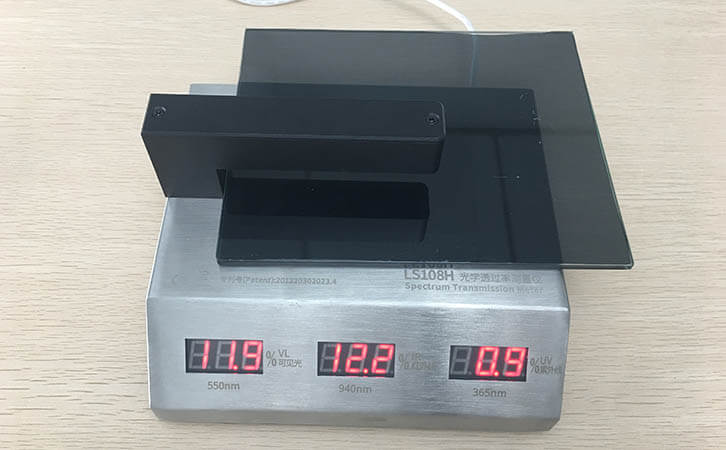Transmission Meter | How to Classify Optical Glass?
1. Classification of colorless optical glass
Optical glass includes colorless optical glass (usually referred to as optical glass), colored optical glass, radiation-resistant optical glass, radiation-resistant glass and optical quartz glass. Optical glass has a high degree of transparency, a high degree of uniformity in chemistry and physics (structure and performance). It has a specific and precise optical constant. It can be divided into silicate, borate, phosphate, fluoride and chalcogenide series.
(1) Optical quartz glass
With silica as the main component, it has the characteristics of high temperature resistance, low expansion coefficient, high mechanical strength, good chemical properties, etc. It is used to manufacture prisms, lenses and windows that have special requirements for transmission in various wave bands and mirrors. In addition, there are photomasks for large-scale integrated circuit manufacturing, liquid crystal display panels and video disc disk-based thin-plate glass; magneto-optical glass whose polarization plane rotates when light passes through the glass along the direction of the magnetic field lines; In the case of ultrasonic glass, acousto-optic glass, etc., which diffracts, reflects, converges, or shifts light, occurs.
(2) Ultraviolet and infrared optical glass
With specific optical constants and high transmittance in the ultraviolet or infrared band, this kind of glass are used as raw materials of ultraviolet and infrared transmission meters or as window materials.
(3) Colored optical glass (filter glass)
It has selective absorption and transmission properties for specific wavelengths in the ultraviolet, visible and infrared regions. It is divided into three types: selective absorption type, cut-off type and neutral gray according to the spectral characteristics; It is divided into ion coloring, metal colloid coloring and sulfur-selenium according to the coloring mechanism 3 types of chemical compound coloring, mainly used in the manufacture of optical filters.
(4) Irradiation-resistant optical glass
Under certain γ-ray and X-ray irradiation, the transmittance of visible light changes little. The varieties and brands use colorless optical glass, called 500 (700) series glass, such as radiation-resistant K9 It is called K509. The radiation-resistant ZK10 is called ZK510; it is usually achieved by adding a certain proportion of cerium oxide.
(5) Anti-radiation optical glass
This kind of glass has a large absorption capacity for high-energy radiation, including high-lead glass and CaO-B2O2 system glass. The former can prevent γ-ray and X-ray irradiation, the latter can absorb slow neutrons and heat. It is mainly used in the nuclear industry and the medical field as shielding and peeping window materials.
2. Optical glass transmittance detection
To detect the transmittance of optical glass, you can use the LS108H transmission meter. It is mainly used to measure the transmittance of various uniform transparent materials. The test aperture of the instrument is 3mm, which is suitable for the measurement of light transmittance, infrared and ultraviolet transmittance of small-size materials. The flat bench-top instrument is convenient for placing various test samples. The materials can be placed and measured immediately and the test is fast and accurate. LS108H transmission meter adopt parallel light path design, can measure thick materials.
The test principle of the LS108H transmission meter is to use ultraviolet light source, infrared light source and visible light source to illuminate the transparent substance under test. The ratio of the transmitted light intensity to the incident light intensity is the transmittance, expressed as a percentage. It is suitable for measuring the transmittance of various uniform transparent materials, such as optical glass, plastic, paint, resin lens, organic glass (acrylic), etc.
- Features of the LS183 UV Transmittance Meter
- Difference between Visible Light Transmission Meter LS183 and LS108H
- Spectacle lens anti-blue light detection---blue-violet light transmittance meter
- Spectrum Transmission Meter for Measuring PC Sheet
- Difference between LS103A and LS183 spectrum transmission meter
- Measuring the Transmittance of a Hemisphere by Plastic Transmittance Meter
